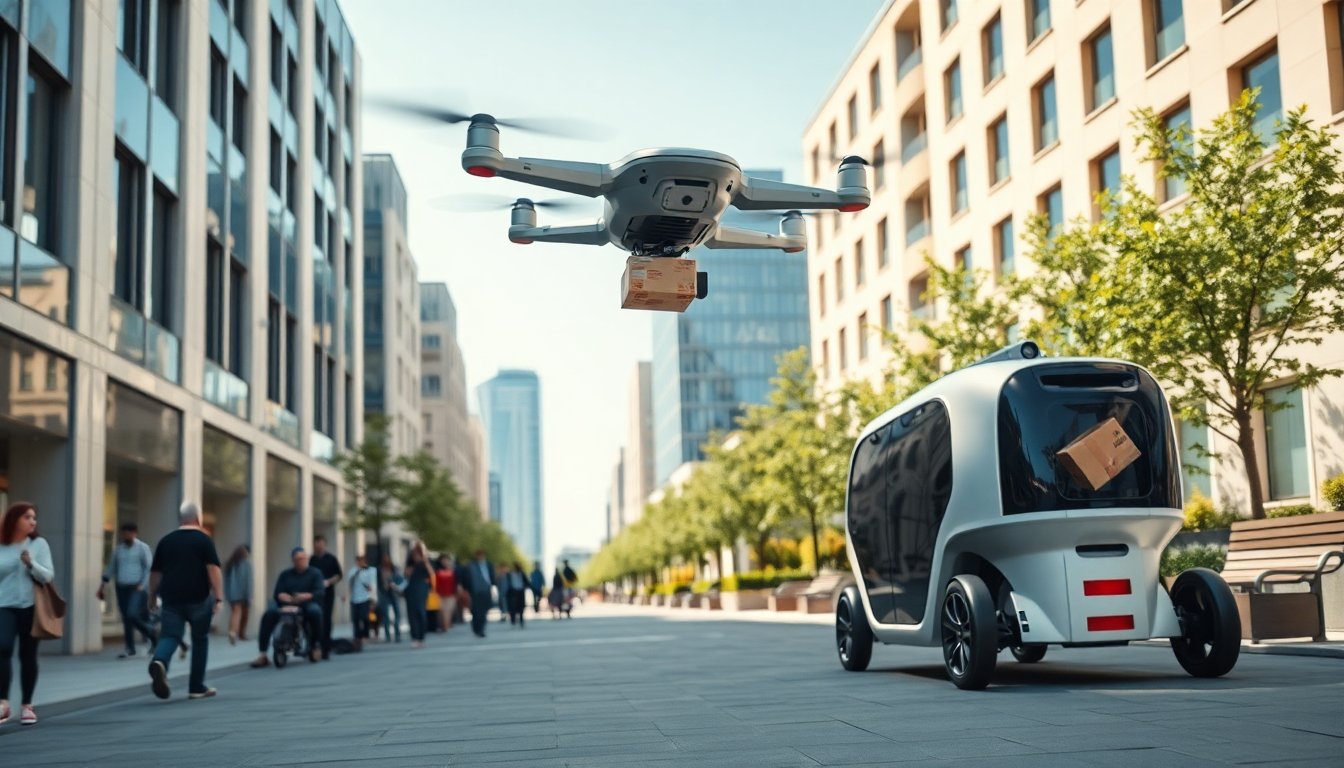Table of Contents
Emerging trend: Autonomous delivery systems
The rise of autonomous delivery systems represents a transformative shift in the logistics industry. Recent studies show that the global market for autonomous delivery vehicles is projected to exceed $60 billion, driven by a compound annual growth rate (CAGR) of 25%.
Industry leaders like Amazon and Google are actively piloting drone deliveries, illustrating the real-world applications of disruptive innovation in logistics.
Expected adoption speed
The future arrives faster than expected: industry experts forecast that autonomous delivery services will become standard in urban areas.
The swift progression of technology, notably in artificial intelligence and robotics, enables companies to implement these systems at an unparalleled pace.
Implications for industries and society
The implications of autonomous delivery systems are significant. Autonomous delivery is not merely about cost reduction; it also addresses labor shortages and improves operational efficiency.
For retailers, this transformation leads to faster fulfillment times and enhanced customer satisfaction. Furthermore, urban areas will need to adapt their infrastructure to support these new delivery methods, potentially resulting in major paradigm shifts in urban planning.
How to prepare today
Businesses must begin preparing now for this unavoidable transition. Investing in exponential growth strategies, such as forming partnerships with technology providers that specialize in automation, will be essential. Companies should also prioritize understanding evolving regulatory environments and shifting customer preferences as they adapt to these advancements.
Future scenarios in logistics
Emerging trends show that several scenarios are likely to unfold in the coming years. We could witness a landscape where autonomous delivery becomes commonplace, which would significantly reduce traffic congestion and emissions. This shift could lead to faster and more efficient logistics operations.
However, if regulations do not evolve swiftly, challenges may arise that could impede the advancement of these technologies. In this context, companies that prepare for these changes today will find themselves in a stronger position to navigate the shifting logistics landscape.





